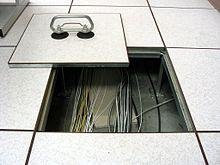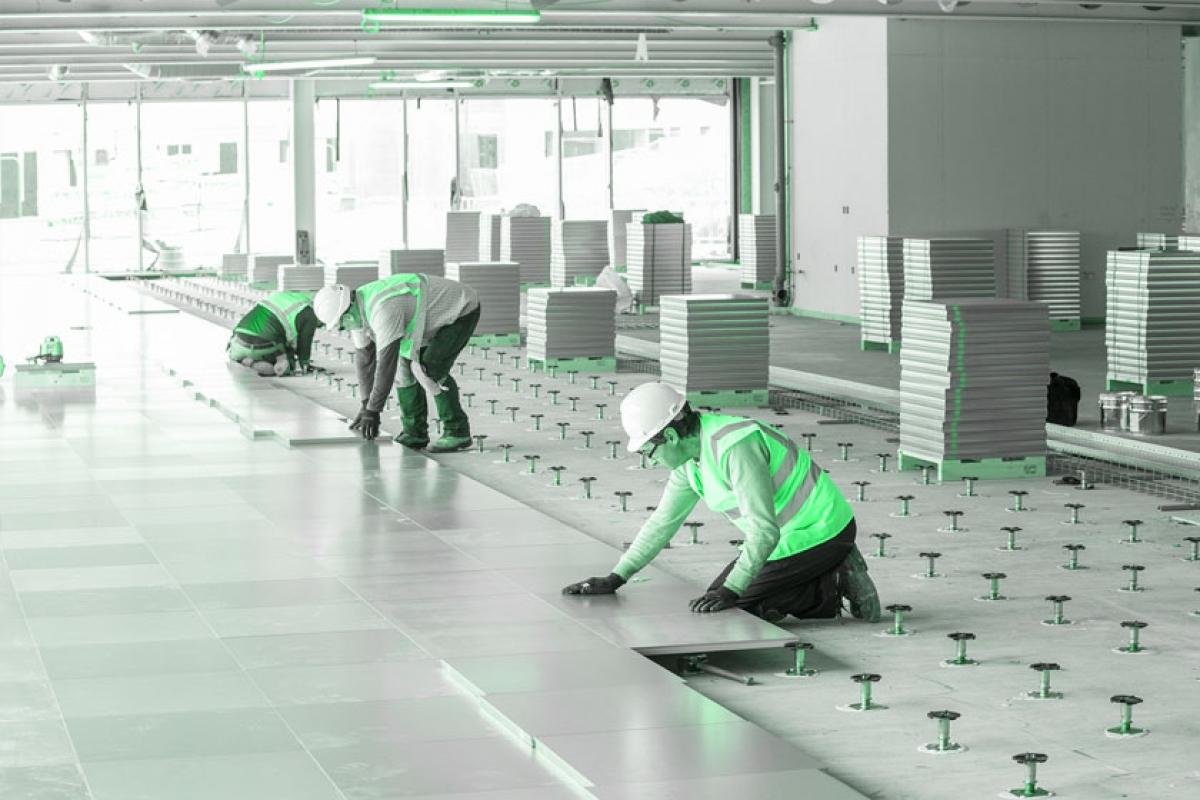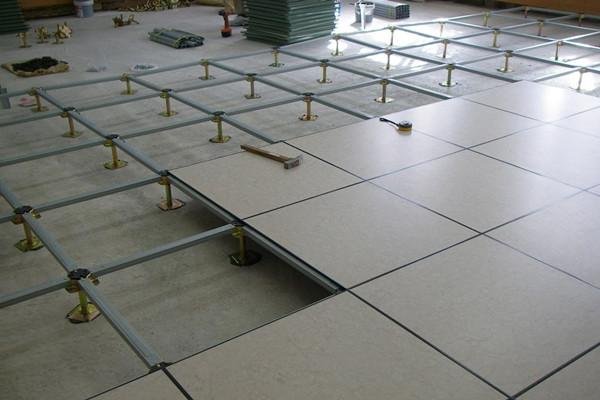
In an increasingly interconnected world, understanding architectural terminology across languages enhances our ability to collaborate on construction and design projects. A common term that surfaces in discussions about modern building infrastructure is “raised floor.” This innovative flooring solution, crucial for accommodating electrical systems, heating, and ventilation, facilitates both functionality and aesthetics in various environments. But how do you say “raised floor” in Spanish? In this article, we’ll navigate the linguistic landscape, uncovering the translation and exploring its significance in architectural conversations across cultures. Join us as we delve into the nuances of this term and its impact on the world of design and construction.
Table of Contents
- Exploring the Translation of Raised Floor in Spanish
- Cultural Context: Understanding Architectural Terminology
- Practical Applications in Construction and Design
- Tips for Accurate Communication in Bilingual Environments
- Q&A
- Concluding Remarks

Exploring the Translation of Raised Floor in Spanish
When it comes to translating “raised floor” into Spanish, the most commonly used term is “suelo elevado.” This term effectively captures the essence of a flooring system that is elevated above the concrete slab to create a space for electrical and mechanical services. Understanding the context in which this term is utilized is essential, as it can vary depending on the industry—be it construction, architecture, or interior design. Moreover, “suelo técnico” is another variation used primarily in commercial settings, emphasizing the technical applications and benefits of raised flooring systems.
In regions where Spanish is spoken, various translations might pop up, reflecting local dialects and preferences. For clarity, here’s a quick comparison of some regional variations:
| Region | Translation |
|---|---|
| Spain | Suelo Elevado |
| Mexico | Plataforma Elevada |
| Argentina | Suelo Técnico |
| Colombia | Suelo Elevado |
Whether you’re discussing this topic with a colleague in Spain or an architect in Mexico, being aware of these subtleties can greatly enhance communication. The versatility of the term allows it to seamlessly fit into various discussions about modern building practices, ensuring that the concept of a raised floor is well understood across different contexts and countries.

Cultural Context: Understanding Architectural Terminology
Understanding the nuances of architectural vocabulary across different languages is crucial, especially when addressing concepts like “raised floor.” In Spanish, the term translates to “suelo elevado”. This terminology not only conveys the physical aspect of flooring but also encompasses various cultural perceptions about space, design, and function in architecture. The choice of words often reflects deeper traditions and practices within a given cultural context, illustrating how language shapes our understanding of architectural elements.
To further appreciate the connections between language and architecture, it’s helpful to consider related terms commonly used in construction and design. Here are some key terms in both English and Spanish that are frequently encountered in architectural discussions:
| English | Spanish |
|---|---|
| Floor | Suelo |
| Structure | Estructura |
| Material | Material |
| Height | Altura |
| Design | Diseño |
By familiarizing yourself with both Spanish and English architectural terms, you can foster a deeper understanding of how different cultures approach design and construction practices. Knowing terms like “suelo elevado” enables better communication and collaboration among architects, builders, and clients from diverse backgrounds, ultimately enriching the architectural experience.

Practical Applications in Construction and Design
In the construction and design industries, raised floors, known as “suelos elevados” in Spanish, are utilized for a variety of practical benefits. These systems are particularly valuable in environments where managing cabling and airflow is critical, such as data centers, offices, and laboratories. With a raised floor, contractors can easily install and modify electrical and data cables, ensuring a clean and efficient workspace. The flexibility allows for rapid adjustments as technology evolves, which is vital in a fast-paced design environment.
Additionally, raised floors offer enhanced climate control, allowing for the incorporation of air distribution systems below the flooring surface. This is especially useful for optimizing energy efficiency in larger buildings. The installation of a raised floor can also enable better acoustics and sound insulation, contributing to a more comfortable work environment. Here are some key advantages:
- Accessibility: Easy access to electrical and data infrastructure.
- Adaptability: Facilitates quick changes and upgrades.
- Efficiency: Improves HVAC performance and building energy use.
- Cost-Effectiveness: Reduces long-term maintenance costs.

Tips for Accurate Communication in Bilingual Environments
In bilingual environments, ensuring effective communication requires an attuned sensitivity to linguistic nuances. Here are some essential practices for achieving clarity:
- Context is Key: Tailor your language choice based on the audience’s familiarity with technical terms. For instance, the term “raised floor” might translate to “suelo elevado” in Spanish, but providing additional context helps others understand its application.
- Cultural Considerations: Different cultures may contextualize phrases uniquely. Be aware of local dialects and preferences, as terms can vary regionally. For example, in some regions, a “raised floor” may also refer to specific architectural features in commercial buildings.
Using visuals can also greatly enhance understanding. Consider implementing diagrams or illustrations when discussing technical subjects. A simple table comparing terminology can serve as a handy reference:
| English Term | Spanish Equivalent | Notes |
|---|---|---|
| Raised Floor | Suelo Elevado | Commonly used in commercial settings |
| Flooring Options | Opciones de Suelo | Include various types for raised floors |
Q&A
Q: What is the Spanish term for ”raised floor”?
A: The Spanish term for “raised floor” is “suelo elevado.” This expression is commonly used in architecture and construction to describe a floor that is elevated above the standard level, often for the purpose of facilitating electrical wiring or HVAC systems.
Q: In what context might I use the term “suelo elevado”?
A: You might encounter ”suelo elevado” in discussions related to commercial buildings, office spaces, or facilities that require flexible cabling and airflow solutions. It’s particularly common in settings where technology plays a significant role, such as data centers and modern office environments.
Q: Are there any synonyms for “suelo elevado” in Spanish?
A: Yes, while “suelo elevado” is the most widely recognized term, you might also come across “plataforma elevada.” However, “suelo elevado” remains the preferred term in most construction contexts.
Q: Is there a difference between “suelo elevado” and other types of flooring in Spanish?
A: Absolutely! “Suelo elevado” specifically refers to flooring that is raised above the ground level, allowing for space underneath. This distinguishes it from other flooring types like “suelo duro” (hard floor) or “suelo blando” (soft floor), which do not incorporate an elevated design for functionality.
Q: How can I incorporate the term “suelo elevado” into a conversation?
A: You can use it in various discussions. For instance, if you’re talking to an architect, you might say, “¿Cómo se puede diseñar un espacio eficiente utilizando suelo elevado?” This translates to “How can we design an efficient space using raised flooring?” Engaging in conversations about modern building solutions will help you naturally integrate the term.
Q: Is “suelo elevado” used in both Spain and Latin America?
A: Yes, “suelo elevado” is understood in both Spain and Latin American countries. However, slang or more regional terms might exist depending on the specific context or location. It’s always a good idea to be aware of regional variations when engaging with Spanish speakers.
Q: Are there any cultural implications associated with “suelo elevado”?
A: While “suelo elevado” itself does not carry specific cultural implications, the use of raised flooring can indicate modernity and technological advancement in building design. It’s often associated with contemporary office spaces that emphasize flexibility and functionality, reflecting a shift in how workplaces are structured in the Spanish-speaking world.
Q: Where can I find more information about raised floors in Spanish?
A: For more detailed information, consider industry publications, architectural design websites, or construction glossaries that focus on Spanish-speaking markets. These resources will provide in-depth context and practical applications for terms like “suelo elevado.”
Concluding Remarks
understanding how to communicate the concept of a “raised floor” in Spanish not only enriches your language skills but also bridges the gap between cultures and industries. Whether you’re an architect seeking to collaborate on international projects, a traveler navigating local terminology, or simply an enthusiast of language, knowing that “raised floor” translates to “suelo elevado” can enhance your interactions and experiences. Remember, language is a living, breathing entity—an ever-evolving tool that connects us in diverse ways. As you continue your linguistic journey, embrace each new phrase as an opportunity for growth and understanding. Wherever your adventures take you, may you find the right words to build connections and share ideas!

